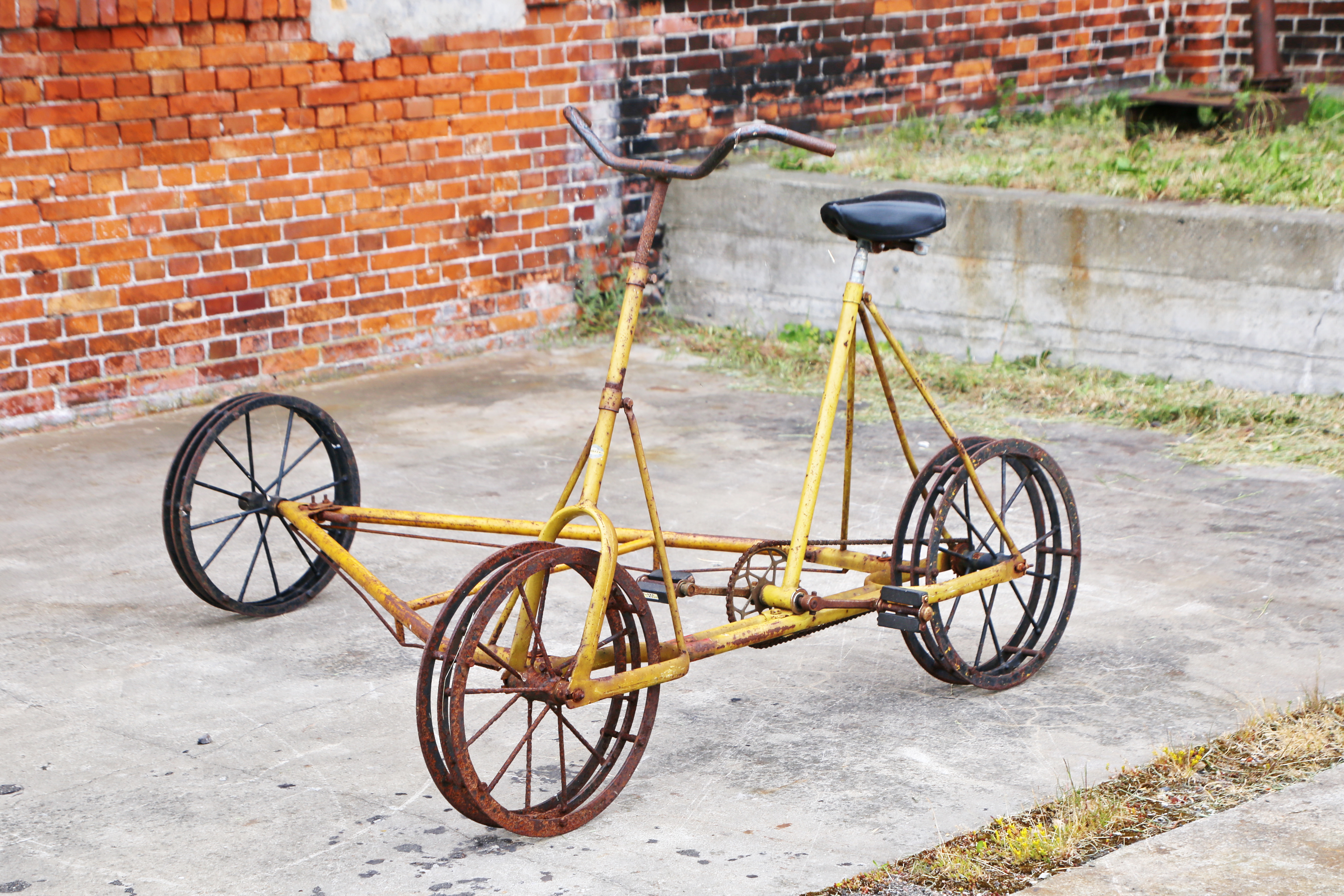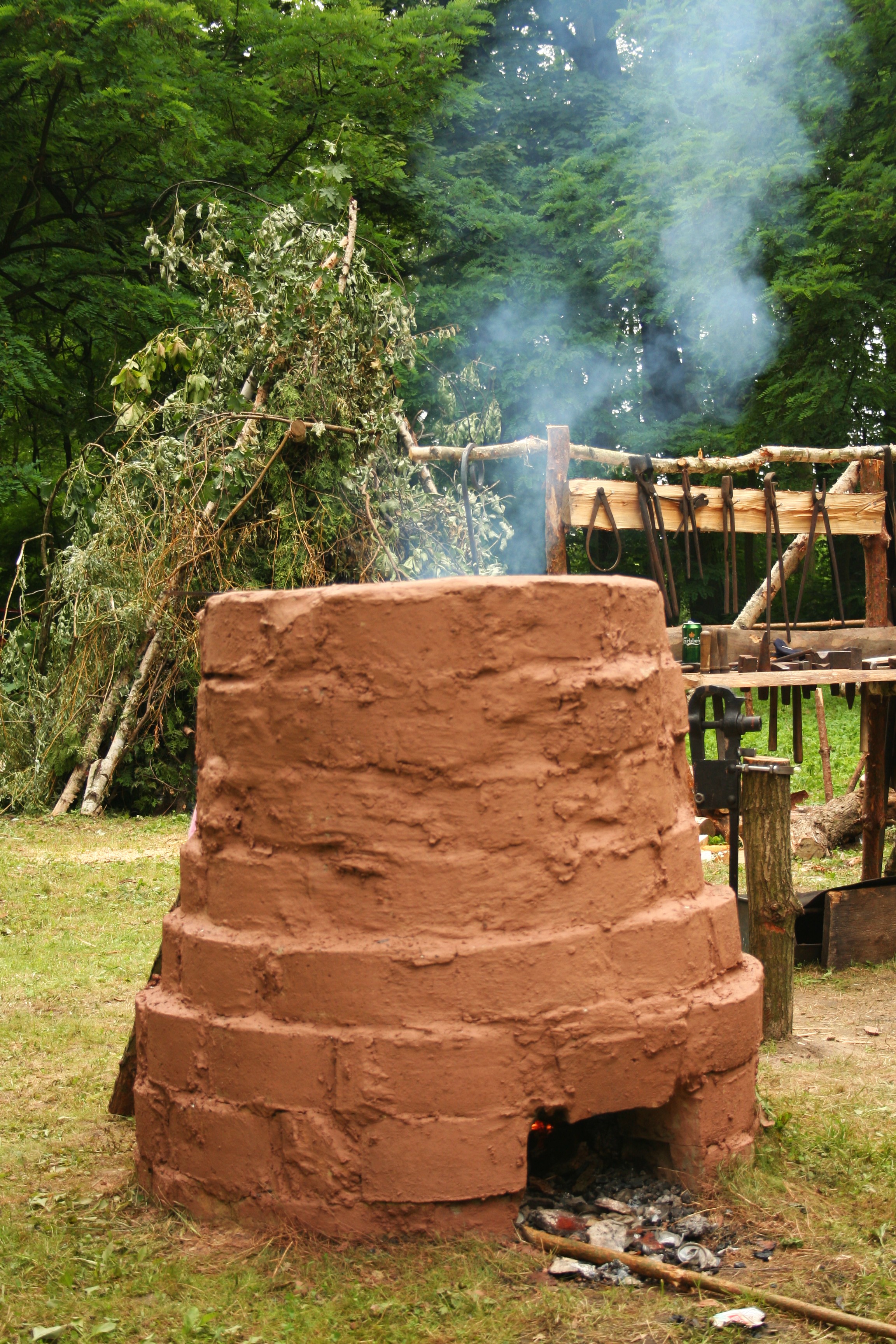|
Tannerre-en-Puisaye
Tannerre-en-Puisaye () is a commune in the Yonne department, in Bourgogne-Franche-Comté, in north-central France, in the historical region of Puisaye. It is famous for its antique ''ferrier'', ''(fr)'' one of the two largest in France with covered. It has been a listed Heritage Monument since 1982. A "ferrier" is a mound, hillock or hill made with residues from the extraction and smelting of iron ore. Geography Tannerre is crossed by the Branlin river, a tributary of the Ouanne river. History Tannerre's ferrier was started during the Iron Age, but 80% of its bulk was made during the 300 years of Roman occupation. A Celtic village, which then became Gallo-Roman, was set half-way up the hill on which the ferrier grew.Antique iron smelting , on the site of the "Association du Ferrier de T ... [...More Info...] [...Related Items...] OR: [Wikipedia] [Google] [Baidu] |
Ferrier Of Tannerre-en-Puisaye
The ancient ''ferrier'' of Tannerre-en-Puisaye, located in the village of Tannerre-en-Puisaye in Burgundy, France, is a historic site used for mining and working of iron. The works date from the Gauls, Gallic and Gallo-Roman times. It is one of two largest ''ferriers'' in France and one of the largest in Europe. Industrial exploitation of the site ceased when it was classed as monument historique, French Heritage monument in 1982. Etymology The root of the word "''ferrier''" is "''fer''", which means iron. This word is quite unique to French : no other language has a word that specifically means "pile of iron slag" or "iron tailings heap": these terms, "slag" and "tailings", can apply to the extraction waste by-product of any metal and not just of iron. Location The ' of Tannerre is in the northern part of Burgundy, in the Yonne departments of France, department, in the commune of Tannerre-en-Puisaye, in and around the ''bois de la Garenne'' (''Wood of La Garenne'') that sta ... [...More Info...] [...Related Items...] OR: [Wikipedia] [Google] [Baidu] |
Puisaye
The Puisaye () is a natural and historical region of France, now divided between the Departments of France, departments of Loiret, Nièvre and Yonne. Its historical and administrative center is the town of Saint-Fargeau. Its inhabitants are known as ''Poyaudins'' (or ''Puisayens''). Regions of France Geographical, historical and cultural regions of France Name According to local 19th-century historian , the name ''Puisaye'' first appeared in 12th-century Charter, charters. It was variously spelled ''Poiseia'', ''Puseium'', ''Pusaya'', ''Puiseia'', ''Puteacia'', or ''Poidaceia''. Geography Since the Puisaye is not an administrative region, its exact definition and limits can vary depending on time and context. Its core is a land of forests and ponds, traversed by several rivers including the Loing. It is bordered by Sancerrois to the west across the Loire river, Gâtinais to the northwest, Auxerrois (region), Auxerrois to the northeast, Forterre to the southeast, and Donzy, Don ... [...More Info...] [...Related Items...] OR: [Wikipedia] [Google] [Baidu] |
Communes Of The Yonne Department
The following is a list of the 423 communes of the Yonne Yonne () is a department in the Bourgogne-Franche-Comté region in France. It is named after the river Yonne, which flows through it, in the country's north-central part. One of Bourgogne-Franche-Comté's eight constituent departments, it is lo ... Departments of France, department of France. The communes cooperate in the following Communes of France#Intercommunality, intercommunalities (as of 2020):BANATIC Périmètre des EPCI à fiscalité propre. Accessed 3 July 2020. *Communauté d'agglomération de l'Auxerrois *Communauté d'agglomération du Grand Sénonais *Communauté de communes de l'Agglomération Migennoise *Communauté de communes de l'Aillantais *Communauté de communes Avallon - Vézelay - Morvan *Communauté de communes Chab ... [...More Info...] [...Related Items...] OR: [Wikipedia] [Google] [Baidu] |
Railroad Switch
A railroad switch (), turnout, or ''set ofpoints () is a mechanical installation enabling railway trains to be guided from one track to another, such as at a railway junction or where a spur or siding branches off. The most common type of switch consists of a pair of linked tapering rails, known as ''points'' (''switch rails'' or ''point blades''), lying between the diverging outer rails (the ''stock rails''). These points can be moved laterally into one of two positions to direct a train coming from the point blades toward the straight path or the diverging path. A train moving from the narrow end toward the point blades (i.e. it will be directed to one of the two paths, depending on the position of the points) is said to be executing a ''facing-point movement''. For many types of switch, a train coming from either of the converging directions will pass through the switch regardless of the position of the points, as the vehicle's wheels will force the points to move. ... [...More Info...] [...Related Items...] OR: [Wikipedia] [Google] [Baidu] |
Control Point (orienteering)
A control point (CP, also control and checkpoint) is a marked waypoint used in orienteering and related sports such as rogaining and adventure racing. It is located in the competition area; marked both on an orienteering map and in the terrain, and described on a control description sheet. The control point must be identifiable on the map and on the ground. A control point has three components: a high visibility item, known as a flag or kite; an identifier, known as a control code; and a recording mechanism for contestants to record proof that they visited the control point. The control point is usually temporary, except on a permanent orienteering course. For events held under International Orienteering Federation (IOF) rules the kite has a triangular form with each face being about 30 cm x 30 cm and coloured white and orange. Most national governing bodies, and related sports use the same design. The earlier specification used white and red. The location of co ... [...More Info...] [...Related Items...] OR: [Wikipedia] [Google] [Baidu] |
Orienteering
Orienteering is a group of sports that require navigational skills using a map and compass to navigate from point to point in diverse and usually unfamiliar terrain whilst moving at speed. Participants are given a topographical map, usually a specially prepared orienteering map, which they use to find control points. Originally a training exercise in land navigation for military officers, orienteering has developed many variations. Among these, the oldest and the most popular is foot orienteering. For the purposes of this article, foot orienteering serves as a point of departure for discussion of all other variations, but almost any sport that involves racing against a clock and requires navigation with a map is a type of orienteering. Orienteering is included in the programs of world sporting events including the World Games (see Orienteering at the World Games) and World Police and Fire Games. History The history of orienteering begins in the late 19th century in Swede ... [...More Info...] [...Related Items...] OR: [Wikipedia] [Google] [Baidu] |
Orienteering
Orienteering is a group of sports that require navigational skills using a map and compass to navigate from point to point in diverse and usually unfamiliar terrain whilst moving at speed. Participants are given a topographical map, usually a specially prepared orienteering map, which they use to find control points. Originally a training exercise in land navigation for military officers, orienteering has developed many variations. Among these, the oldest and the most popular is foot orienteering. For the purposes of this article, foot orienteering serves as a point of departure for discussion of all other variations, but almost any sport that involves racing against a clock and requires navigation with a map is a type of orienteering. Orienteering is included in the programs of world sporting events including the World Games (see Orienteering at the World Games) and World Police and Fire Games. History The history of orienteering begins in the late 19th century in Swede ... [...More Info...] [...Related Items...] OR: [Wikipedia] [Google] [Baidu] |
Draisine
A draisine () is a light auxiliary rail vehicle, driven by service personnel, equipped to transport crew and material necessary for the maintenance of railway infrastructure. The eponymous term is derived from the German inventor Baron Karl Drais, who invented his ''Laufmaschine'' (German for "running machine") in 1817, which was called ''Draisine'' in German (''vélocipède'' or ''draisienne'' in French) by the press. It is the first reliable claim for a practically used precursor to the bicycle, basically the first commercially successful two-wheeled, steerable, human-propelled machine, nicknamed hobby-horse or dandy horse. Later, the name draisine came to be applied only to the invention used on rails and was extended to similar vehicles, even when not human-powered. Because of their low weight and small size, they can be put on and taken off the rails at any place, allowing trains to pass. In the United States, motor-powered draisines are known as speeders while human- ... [...More Info...] [...Related Items...] OR: [Wikipedia] [Google] [Baidu] |
Quarry Tub
A tub or quarry tub is a type of railway or tramway wagon used in quarries and other industrial locations for the transport of minerals (such as coal, sand, ore, clay and stone) from a quarry or mine face to processing plants or between various parts of an industrial site. This type of wagon may be small enough for one person to push, or designed for haulage by a horse, or for connection in a train hauled by a locomotive. The tubs are designed for ease of emptying, usually by a side-tipping action. This type of rail vehicle is now mainly obsolete, its function having been mostly replaced by conveyor belts. See also * British narrow gauge railways * Chaldron * Corf * Mine car * Minecart * Mineral wagon * Mine railway A mine railway (or mine railroad, U.S.), sometimes pit railway, is a railway constructed to carry materials and workers in and out of a mine. Materials transported typically include ore, coal and overburden (also called variously spoils, waste, ... Refe ... [...More Info...] [...Related Items...] OR: [Wikipedia] [Google] [Baidu] |
Bloomery
A bloomery is a type of metallurgical furnace once used widely for smelting iron from its oxides. The bloomery was the earliest form of smelter capable of smelting iron. Bloomeries produce a porous mass of iron and slag called a ''bloom''. The mix of slag and iron in the bloom, termed ''sponge iron'', is usually consolidated and further forged into wrought iron. Blast furnaces, which produce pig iron, have largely superseded bloomeries. Process A bloomery consists of a pit or chimney with heat-resistant walls made of earth, clay, or stone. Near the bottom, one or more pipes (made of clay or metal) enter through the side walls. These pipes, called ''tuyeres'', allow air to enter the furnace, either by natural draught or forced with bellows or a trompe. An opening at the bottom of the bloomery may be used to remove the bloom, or the bloomery can be tipped over and the bloom removed from the top. The first step taken before the bloomery can be used is the preparat ... [...More Info...] [...Related Items...] OR: [Wikipedia] [Google] [Baidu] |


